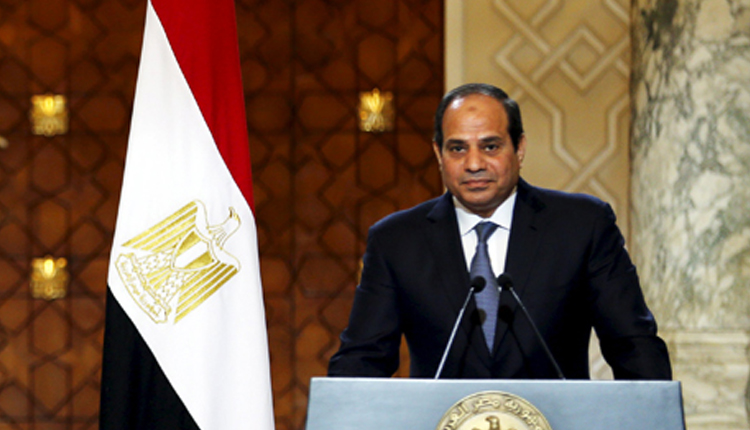Sisi launches AfCFTA, the world’s largest free trade zone at AU Summit
Egyptian President Abdel Fattah al-Sisi, who currently chairs the African Union, launched on Sunday the long-awaited African Continental Free Trade Area (AfCFTA).
If successful, the new free-trade zone would unite 1.3 billion people, create a $3.4 trillion economic bloc and usher in a new era of development for Africa.
Sisi made his remarks at the opening ceremony of the 12th Extraordinary Summit of the African Union taking place in Niamey, Niger.
“The eyes of the world are turned to Africa,” Sisi told leaders and ministers from the 55 African Union countries taking part in the summit.
AfCFTA “will reinforce our negotiating position on the international stage. It will represent an important step.”
“We must understand that we still have a long road and that industrial integration between African countries demands a great effort,”
Sisi also stressed the importance of boosting collaboration with the private sector to work on the creating a strong infrastructure in the continent.
AfCFTA aims at reducing imports, improving productive and manufacturing capacities and supporting infrastructure projects in Africa. It will work to generate employment opportunities for a rapidly growing young workforce between member states. It could also enhance intra-African trade by 52.3 percent annually, according to the United Nations Economic Commission for Africa (UNECA).
The new free-trade zone will be the world’s largest free trade area since the formation of the World Trade Organization seven decades ago. It is expected to favour small and medium-size businesses, which are responsible for more than 80 percent of Africa’s employment and 50 percent of its GDP.
The agreement was formalised at the end of May when it crossed the launch threshold, which required ratification by at least 22 countries.
Economists say significant challenges remain, including poor road and rail links, large areas of unrest, excessive border bureaucracy and petty corruption that have held back growth and integration.
Members have committed to eliminate tariffs on most goods, which will increase trade in the region by 15-25 percent in the medium term, but this would double if these other issues were dealt with, according to estimates by the International Monetary Fund (IMF).
IMF described earlier in a May report the free-trade zone as a potential “economic game changer” of the kind that had boosted growth in Europe and North America, but it added a note of caution.
“Reducing tariffs alone is not sufficient,” it said.
Conflicting Interests Concerns
Africa already has a number of competing and overlapping trade zones, namely ECOWAS in the west, EAC in the east, SADC in the south, and COMESA in the east and south.
However, only the EAC, driven mainly by Kenya, has made significant progress towards a common market in goods and services.
These regional economic communities (REC) will continue to trade among themselves as they do now, Reuters cited Trudi Hartzenberg, director at Tralac, a South Africa-based trade law organisation, as saying.
The role of AfCFTA is to liberalise trade among those member states that are not currently in the same REC, Hartzenberg added.
The AfCFTA’s potential clout received a boost on Tuesday when Nigeria, the largest economy in Africa, agreed to sign the agreement at the summit. Benin has also since agreed to join. 54 of the continent’s 55 states have signed up, but only 25 have ratified.
One obstacle in negotiations will be the countries’ conflicting motives.
For undiversified but relatively developed economies like Nigeria, which relies heavily on oil exports, the benefits of membership will likely be smaller than others, said John Ashbourne, senior emerging markets economist at Capital Economics, told Reuters.
Nigerian authorities have expressed concern that the country could be flooded with low-priced goods, confounding efforts to encourage moribund local manufacturing and expand farming.
In contrast, South Africa’s manufacturers, which are among the most developed in Africa, could quickly expand outside their usual export markets and into West and North Africa, giving them an advantage over manufacturers from other countries, Ashbourne added.
The presidents of both countries are attending the summit.
The vast difference in countries’ economic heft is seen as another complicating factor in negotiations. Nigeria, Egypt, and South Africa account for over 50 percent of Africa’s cumulative GDP, while its six sovereign island nations represent about 1 percent.
“It will be important to address those disparities to ensure that special and differential treatments for the least developed countries are adopted and successfully implemented,” said Landry Signe, a fellow at the Brookings Institution’s Africa Growth Initiative, told Reuters.
Therefore, regulations governing rules of origin, removal of non-tariff barriers and the development of a payments, and settlements system are expected to be unveiled at the summit.
— Amwal Al Ghad English’s Yomna Yasser, Reuters, and Excellent Communications’ Mona Youssef contributed to this report.



